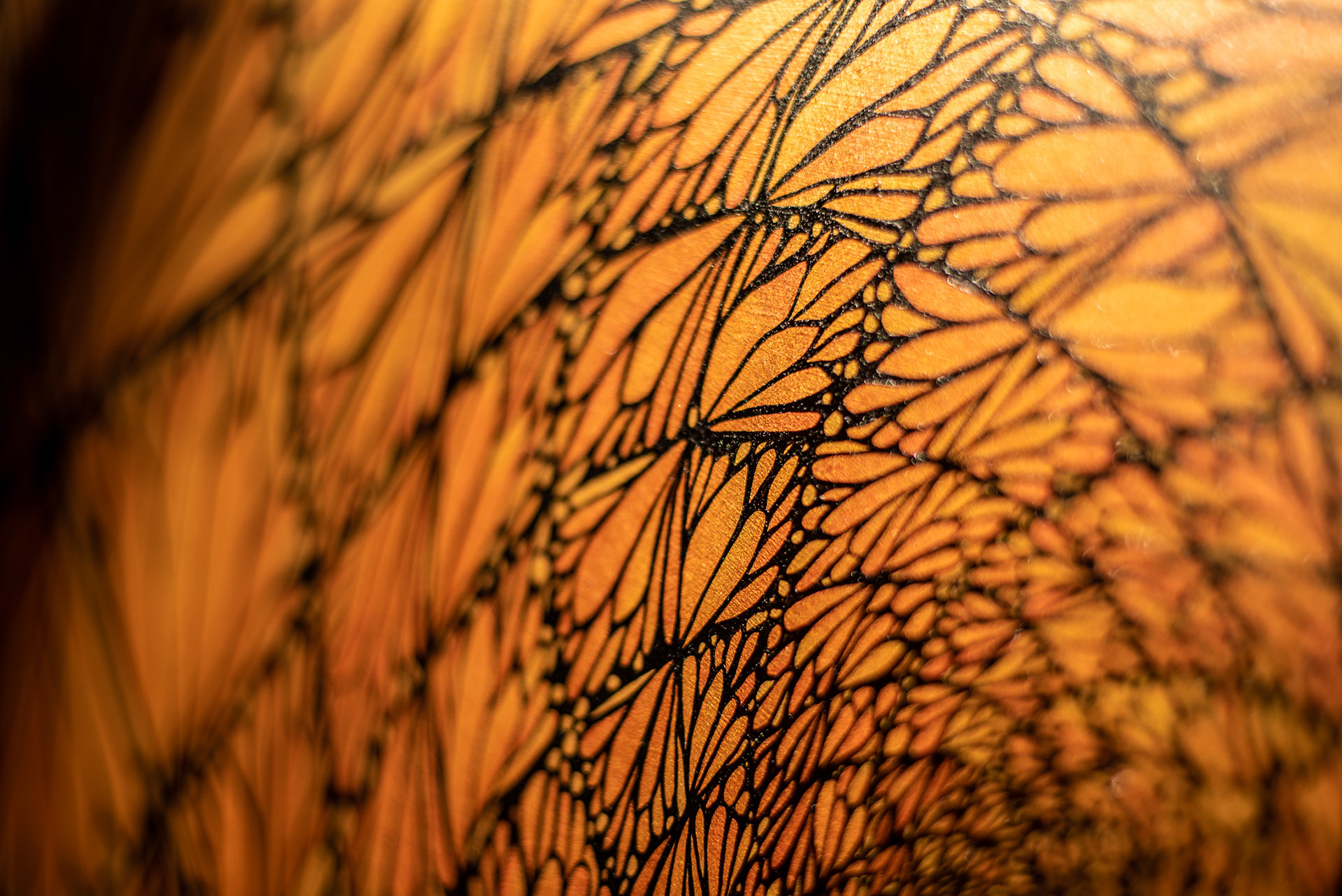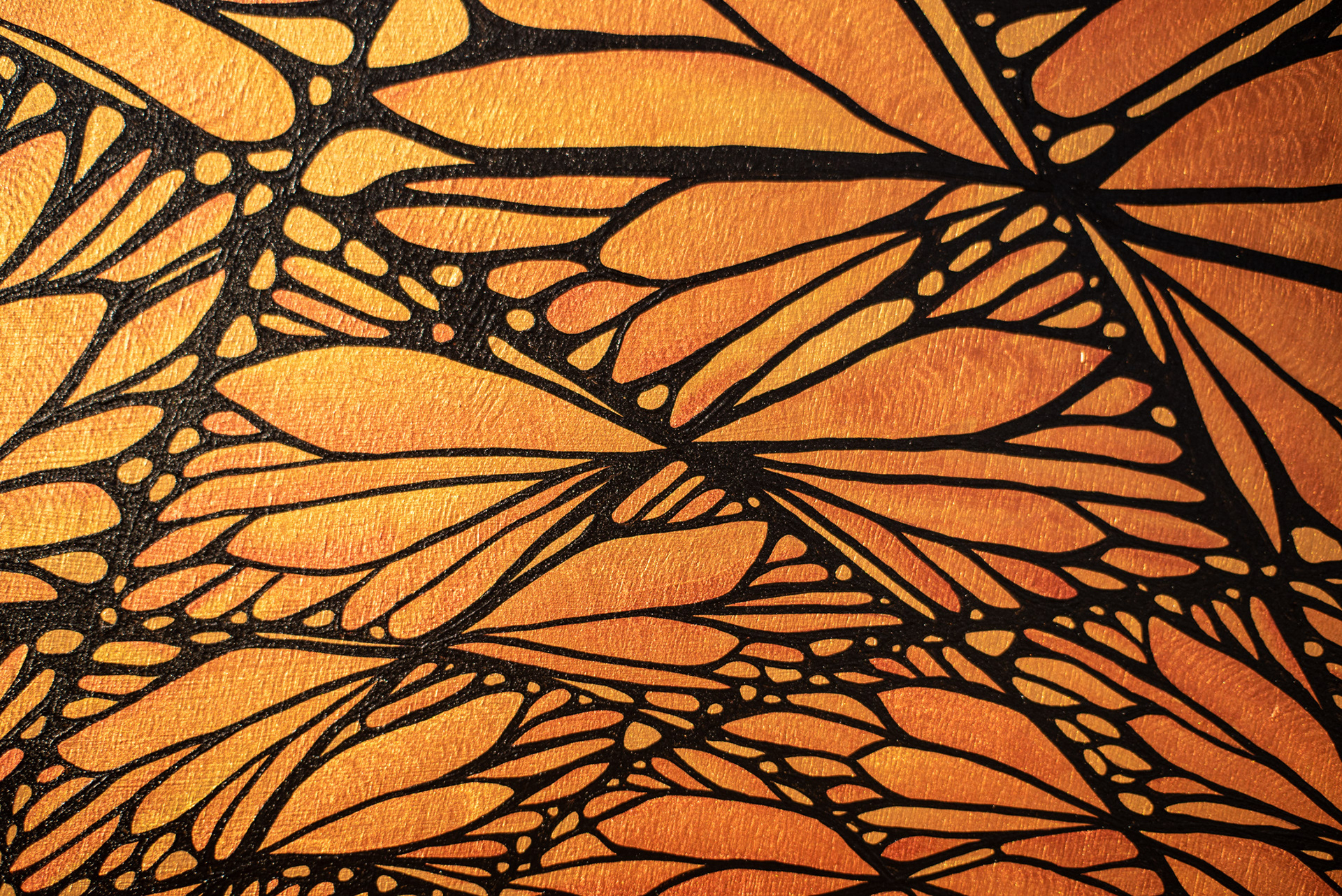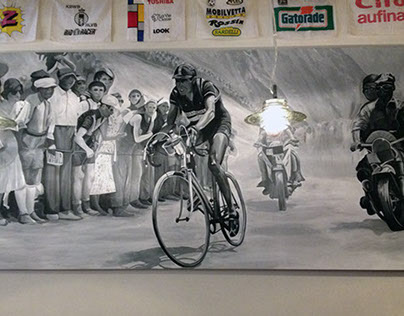While we don’t generally take on many private commission works, in early May we came across a very unique opportunity to test new techniques and practice our technical skills, so we said yes the challenge.
The Story
The patron, Michael, was looking to hire an artist to paint an artwork that would best reflect a very specific moment in time that he and his wife, Donna, had experienced in late August of 2018.
After the recent purchase of a beach house property on Lake Huron, Michael and Donna decided that renovating the building would be a great way to have a home away from home where they could relax together offline.
On their first visit to the property, something magical happened. The timing aligned to that of the 2018 Monarch butterfly migration, and it happened to be taking place around the new property. There were Monarch butterflies everywhere–thousands of them in the air. It was an impossible moment to forget and forever exists in their memories.
To the south edge, there’s a limestone quarry that has become a natural waterfall. The farmland flows down toward the lake, where the sun sets to the west.
Michael’s wife, Donna, studied archeology, paleontology, and anthropology at the University of Toronto, so she’s had a keen interest in animals, migration patterns, and history. The Monarch, when looked at through this lens, offered her an incredible new species to observe.
Michael decided to surprise Donna for her birthday with a 4’ x 4’ wooden panel that would live within their main staircase to forever remind the two of them of this moment at The Monarch.
Turning a Story into Art
It’s often an exciting challenge for us to turn a story into a mural or artwork. In this case, we had incredible freedom because Michael wanted to see where we’d take that story without impeding the creative process. He was open to no reviews on concept design.
After a few explorations and failed attempts at laying out the Monarch across the 4’x4’ canvas, we came up with a creative solution that would fit within our love for patterns and symmetry, while also celebrating the beauty of the Monarch wing in a balanced, rhythmic way.
Studying the Species
With each of the works we do, we always take time to study the species in great detail. Think about the complexities that exist between different plants and animals. While we like to remain abstract in our work, we feel that knowing the details can make or break the realism that we underlay in each of our artworks. In this case, we greatly studied the differences between male and female Monarchs, as well as the colour patterns and variants.


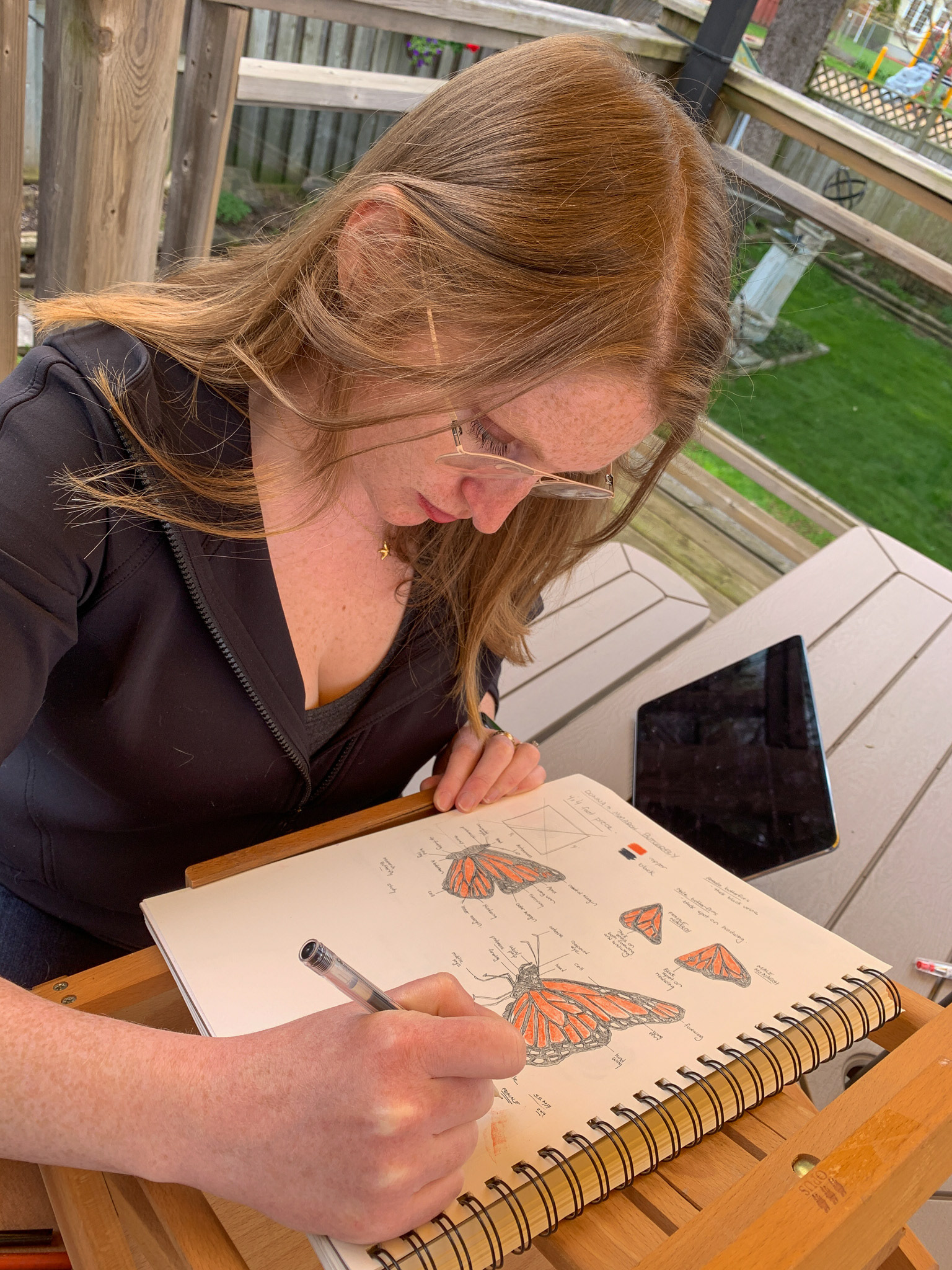

Base-Coating the Panel
After digitally preparing a complex grid system, we individually draw each of the mirrored Monarch butterfly wings out within the squares, then moved on to the preparation of the wooden panel. In this case, we selected a 4’ x 4’ wooden Maple panel board instead of a canvas panel because we prefer the rigid texture vs. the soft buoyancy.
After a thick coat of gesso base, followed by a smooth sanding, then another thick base coat of bright Gold Rustoleum, we moved onto transposing the wing shapes onto the panel. Each wing shape was individually painted using a unique mixture of Golden products, Bright Gold and Copper paints to create the fine tones and variations in colour that appear in the finished work.
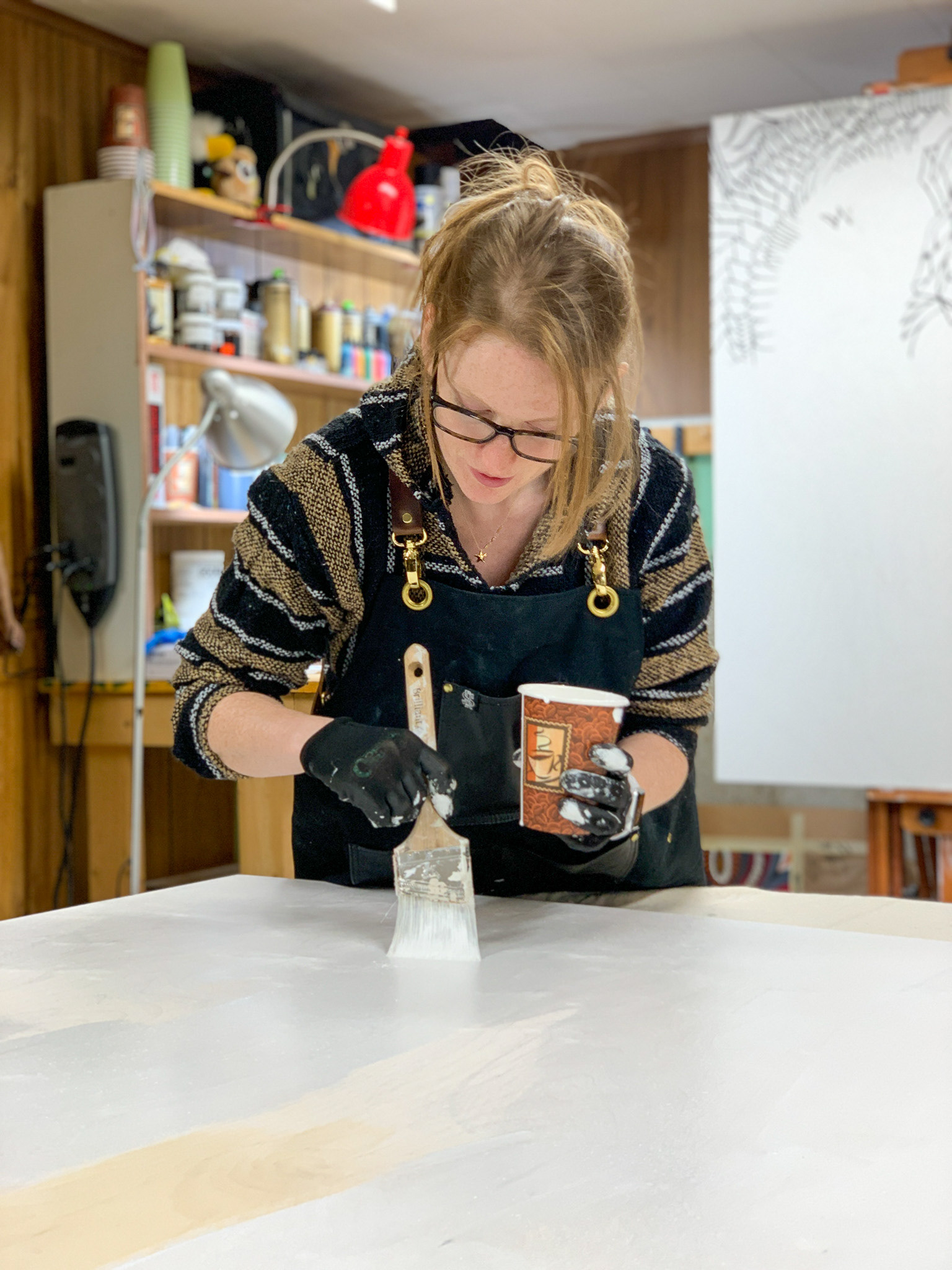




The Tiniest of Details
And then, the fun starts. Using Princeton Glacier size 000 fine-hair watercolour brushes, we begin to outline each of the Monarch butterflies from the center moving out. Each gets bigger than the last, based on the beautifully prepared grid system that underpins the entire artwork.







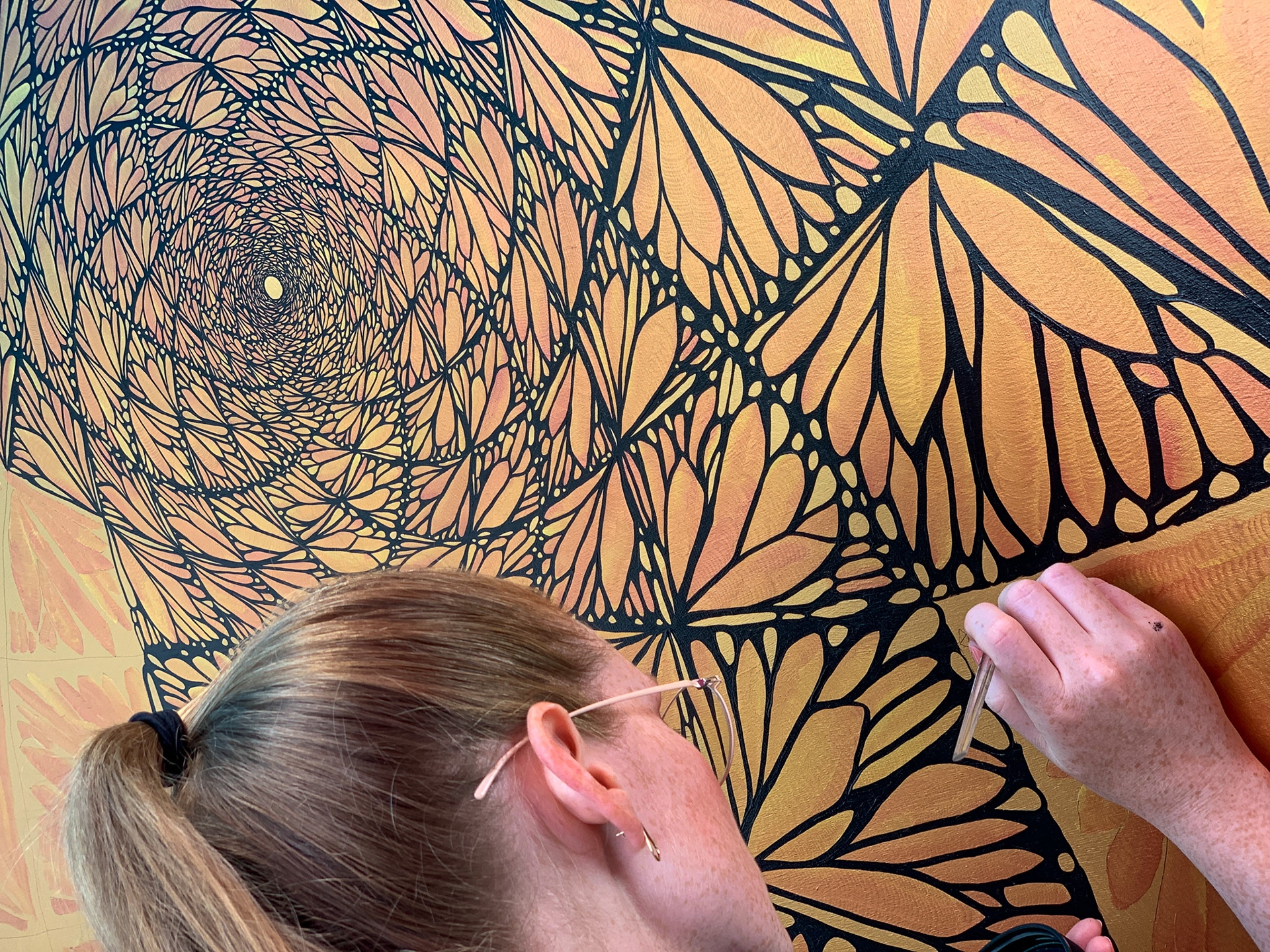

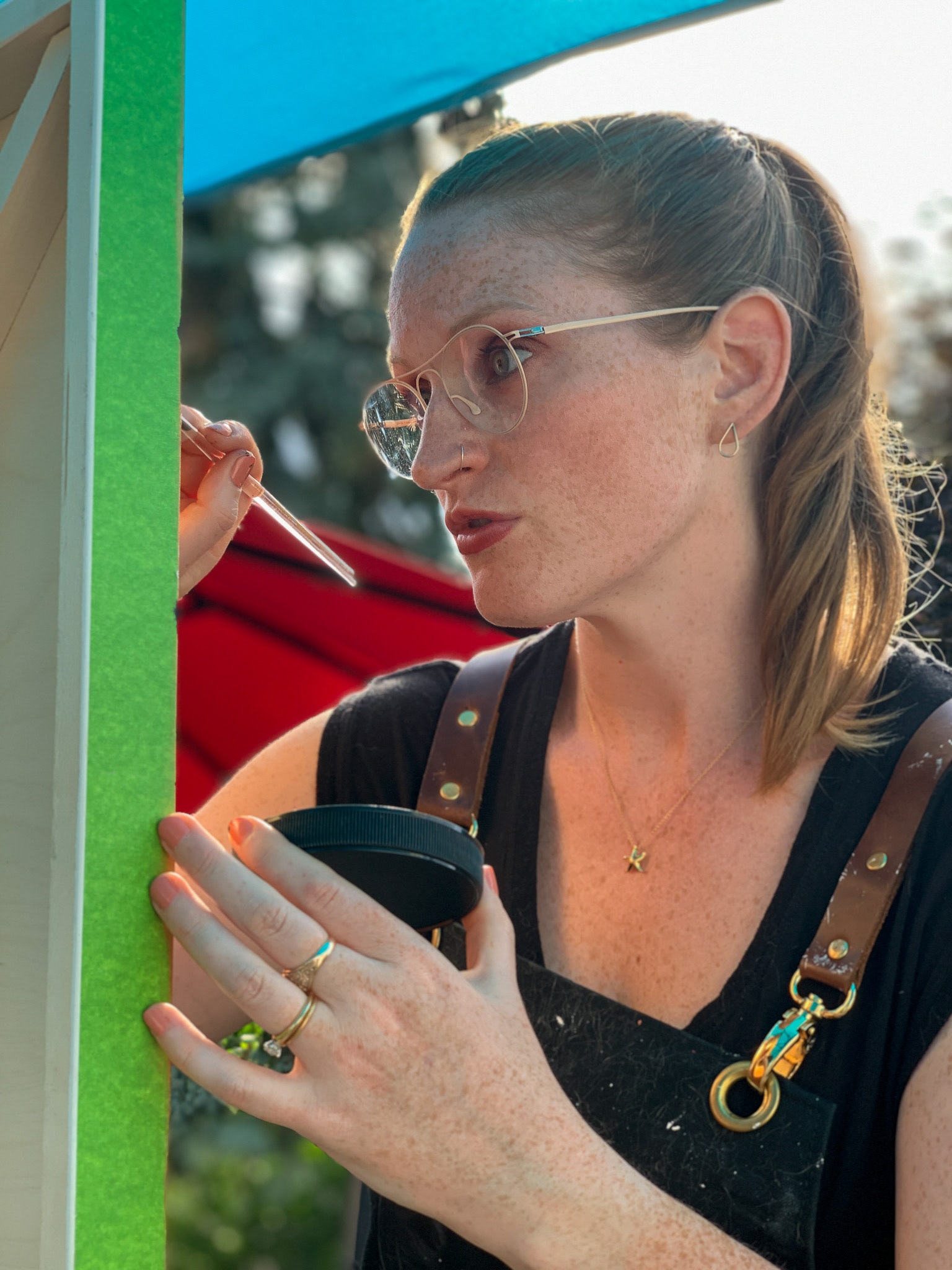




The Final Art
Titled “Depart for Monarch”, this stunning copper and gold hand-painted work was commissioned to celebrate a moment in time when the recipient of this piece was completely overwhelmed with the warm golden sun and seemingly thousands of Monarch butterflies.
To encapsulate that moment, this work is based on a radial phyllotaxy grid on a 4’ x 4’ wooden Maple panel board. There are 276 individual Monarch wings, with roughly 16 individual hand-painted sections per wing, for an estimated grand total of about 4,416 individually painted discall cells in this overwhelming detailed work.
